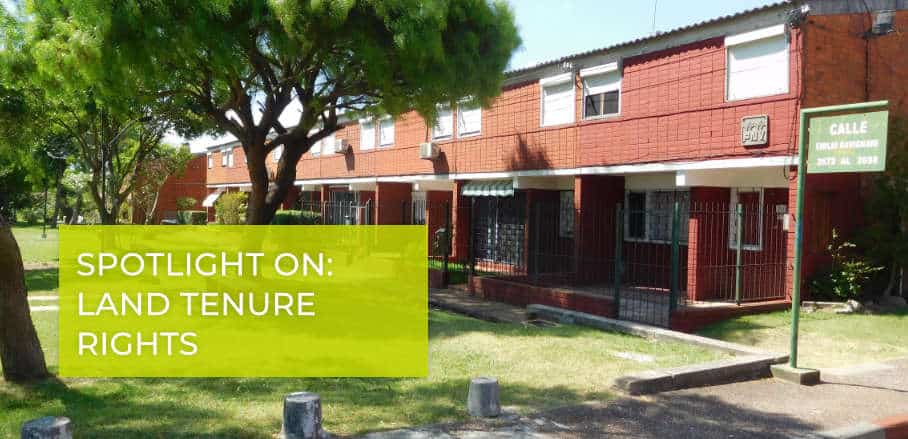Do Land-Based Commons Lead to More Inclusive Cities in the Global South?
What is the impact of land-based commons on tenure security and on progress toward “inclusive cities”? Eric Denis, Claire Simonneau, and Irène Salenson explore cases of collective housing projects in Latin America, Africa, and Asia.
A samba museum in Rio de Janeiro? What a nice idea! But in 2002, the museum project threatened to evict inhabitants of the Catumbi neighbourhood, next to the Morro da Mineira favela, from their homes. They eventually managed to avoid eviction by claiming the right to own the area, resulting in a “land-based common”: a collective land title gained through usucapio or acquisitive prescription.
Securing land tenure helps access to “adequate housing”, according to UN terminology, for dwellers of fast-growing cities of the Global South. While mainstream land management is based on private ownership, generating speculation, land financialisation and exclusion of the poorest households, the commons approach considers possession as a bundle of rights that can be split and shared, regarding social dimensions such as the inclusion of the poorest.
This article stems from a research programme on ‘urban land-based commons for housing’ conducted by the Géographie-Cités lab between 2017 and 2020 for the French Development Agency (AFD). The first section provides a definition of “land-based commons” and examples. The second one analyses the impact of land-based commons on tenure security, provision of affordable housing, and potential progress towards “inclusive cities”.
Land-Based Commons for Housing in the Global South
Commons are understood as institutional arrangements that manage the use and disposition of resources. Within “land-based commons”, rights to access, use, and transfer land are shared among a community – or the community is claiming the right to do so. Three types of land-based commons were considered by our research: (i) land and housing cooperatives, (ii) collective claiming of land rights – commoning, (iii) urban development over customary or collectively owned land.
A pioneering example of the first type was created at the end of the 1960s in Uruguay, following social mobilisation by trade unions and political parties: Mutual Aid Housing Cooperatives. Since then, these cooperatives have contributed to 30 per cent of subsidised housing production in Uruguay. Public authorities ease access to available land and provide a common loan to the community. Land and housing units are jointly owned; shareholders get use rights. According to the mutual aid principle, members are in charge of maintenance – 21 hours per household per week. Other housing cooperatives have been initiated in various countries, including Bolivia, Burkina Faso, and Senegal, but so far with limited concrete results for precarious households.
The second type of land-based commons consists of collective claiming of land rights, as illustrated with the Catumbi community in Rio de Janeiro. This commoning process was witnessed within many precarious settlements across the world, such as in South Africa, Namibia, Tanzania, or India, for instance.
The third type will not be presented here but further details can be found in several publications.
Impact of Land-Based Commons on Tenure Security, Affordable Housing, and Inclusive Cities
Land-based commons are formal or informal agreements among members of a community, sometimes supported by local or national governments.
When formal, such as Housing Cooperatives, Community Land Trusts (CLT), or Collective land titling, urban dwellers get access to tenure security through a legal process that protects them against eviction. They are better “included” in the city, spatially, legally, and socially. They also get easier access to affordable housing for several reasons. First, collective titling is cheaper than individual titling. Second, self-building and mutual aid lower construction and maintenance costs. Third, anti-speculation mechanisms are set up within cooperatives and CLT in order to maintain affordable housing prices and to prevent gentrification processes. Members are not allowed to sell their housing units according to market prices. Such formal mechanisms require legal reforms, governance systems, public subsidies, and political will, which is sometimes lacking.
More informal, bottom-up practices, such as share of use rights on customary land within urban areas, or collective claim to land occupation, even if temporary, also aim at improving tenure security. They are also aiming for better access to affordable housing, public services, education, and job opportunities, in short: a better inclusion into the city.
Thus, rather than trying to foster widespread individual land titling and access to mortgage for low-income households, attention could be given to alternative ways of securing precarious land occupations that manage to meet a social need. Shifting paradigms and approaches allow to acknowledge various modes of governance, alternative land management, and innovative ways of living and shaping the city.
Conclusion
Reference to the commons approach helps to renew perspectives on land management, social and affordable housing, and sustainable and inclusive urban development. It challenges conventional land tenure frameworks and pushes back the boundaries of private ownership. Bottom-up and alternative practices are taken seriously; city dwellers are considered competent to set up joint housing projects and to organise their own governance system.
Of course, many common experiences are temporary, fragile, and flexible, especially when they are exposed to free-market interests or changes within the political landscape. This highlights the strong influence of local context and thus moderates the idea of lessons learnt or best practices.
Consequently, support for collective practices, though critical, should not hinder major public investments for basic services and inclusive urban development. Key challenges should not be forgotten, such as local power balance, misinterpretation of city dwellers’ needs, negative effects of fast-track community participation mechanisms, et cetera. In short, it seems essential to guard the commons approach against a fashionable use if it is to be successful.
